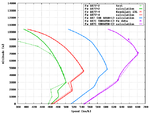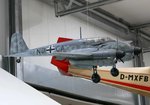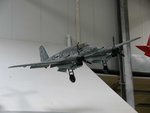kool kitty89
Senior Master Sergeant
Yes, and the Goblin was better used for the Vampire as well. (it was probably good that DH kept their Goblins, save for those sent to the XP-80 project) If there'd been more intrest the Vampire by the Air ministry it may have seen servise sooner.
The Vampire was a better design IMO as it could do more with less thrust/weight and was all-around better in terms of practicality and performance. Of course, the Meteor would have been 2 years ahead in development if it weren't for Rover...
Both England and Germany made some stupid mistakes like that with their jet programs. (ie canceling Heinkels class I engines)
On the other hand the US jet program went rather smoothly, albeit more than 2 years late in the game and getting a head start with Whittle's design. However, if we look a little further back we can see that the US made on of the BIGGEST mistakes of all: somewhat like the Soviets, the US had a number of jet/rocket reasearch project in the 1930's, in particular a NACA program which progressed to about 1939 and then was abandoned as "impractical." Another jet/rocket program was also started, but focused primarily with small designs for RATO/JATO. And thus the US lost any chance at getting into the feild nearly as early as others. In fact the NACA was still favoring ducted fan/motorjet designs with the new development projram in 1941. (the only real development from this program was with Westinghouse and Became the J30, the first all American turbojet engine to run, and also one of the best performing engines of the War with excelent thrust for its size: 1600 lbf at 19 in diameter and under 700 lbs weight)
The Vampire was a better design IMO as it could do more with less thrust/weight and was all-around better in terms of practicality and performance. Of course, the Meteor would have been 2 years ahead in development if it weren't for Rover...
Both England and Germany made some stupid mistakes like that with their jet programs. (ie canceling Heinkels class I engines)
On the other hand the US jet program went rather smoothly, albeit more than 2 years late in the game and getting a head start with Whittle's design. However, if we look a little further back we can see that the US made on of the BIGGEST mistakes of all: somewhat like the Soviets, the US had a number of jet/rocket reasearch project in the 1930's, in particular a NACA program which progressed to about 1939 and then was abandoned as "impractical." Another jet/rocket program was also started, but focused primarily with small designs for RATO/JATO. And thus the US lost any chance at getting into the feild nearly as early as others. In fact the NACA was still favoring ducted fan/motorjet designs with the new development projram in 1941. (the only real development from this program was with Westinghouse and Became the J30, the first all American turbojet engine to run, and also one of the best performing engines of the War with excelent thrust for its size: 1600 lbf at 19 in diameter and under 700 lbs weight)




